Tudor Tower, 25 Tudor City Place: Review and Ratings
between East 41st Street & East 42nd Street View Full Building Profile
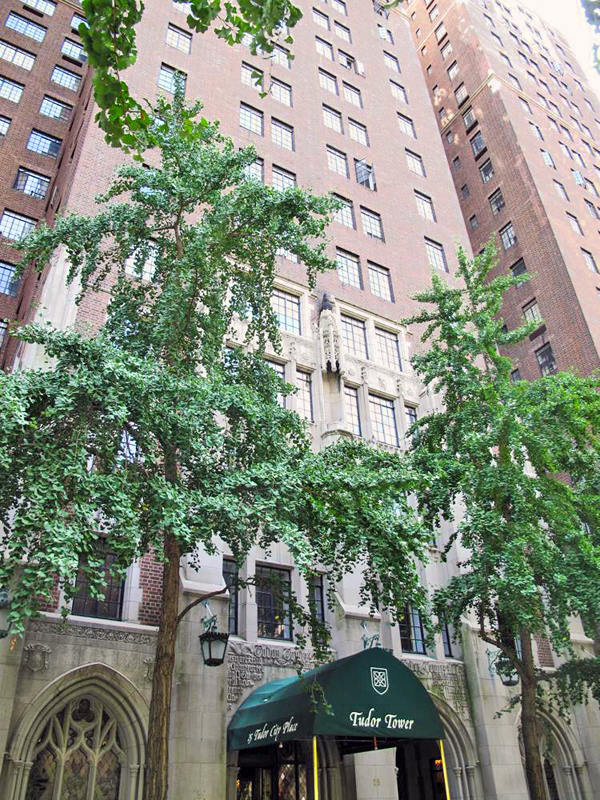

This high-rise residential complex is clustered around two parks on a hill connected by a bridge over 42nd Street overlooking two of the city's important landmarks: the Ford Foundation Building to the west and the United Nations to the east.
When one considers the convenient public transportation, nearby highway access and the proximity of the East River, what could be more idyllic?
When it was built, however, it was not so idyllic.
The site of the United Nations was occupied by many of the city's slaughterhouses and the stench was often so bad that the developer of the complex, the Fred F. French Company, opted not to put many windows on the east façades.
The replacement of the slaughterhouses by the United Nations complex was a grand improvement for the area and the subsequent construction of the Ford Foundation Building ratcheted the area's status immensely with its philanthropic presence and its famed landscaped atrium overlooking the Tudor City parks.
With the exception of a few of the complex's dramatic penthouses, most apartments are relatively small, but residents have obviously enjoyed the benefits of the parks and the convenient location so much that they successfully protested and blocked plans by Harry B. Helmsley, who took over ownership of the complex, to erect a new residential tower on one of the parks. Although the plan was more of a political ploy than a real proposal, strange things can happen in New York City and the complex's residents took it very seriously and well they should have as Tudor City is a Forest Hills on steroids with the added convenience of a central Manhattan, rather than Queens, location!
The dark brown brick buildings are handsomely trimmed with terra-cotta decoration and all have small but pleasant entrances and very attractive rooflines, especially the west façades of the two large buildings on the east whose double-height windows and heraldic façade treatment are memorably impressive.
The proportions of the buildings are particularly fine and rather majestic and their uniformity (albeit with minor variations) provides an unmatched cohesiveness for a small park in Manhattan.
The fact that the developer did not create a larger span across 42nd Street to create an even larger park is understandable economically, especially given the risk at the time of construction because of their area's unsavory slaughterhouses nearby. That decision, moreover, seems in retrospect to have made good planning sense, too. A large park is a nice amenity, of course, but two smaller parks affords a more proprietary intimacy for the immediately adjacent residents, a "sense of place" that came into architectural vogue many decades after the complex was built.
According to Robert A. M. Stern, Gregory Gilmartin and Thomas Mellins, the complex was the city's "first high-rise, high density residential enclave to be realized." In their book, "New York 1930, Architecture and Urbanism Between The Two World Wars," (Rizzoli International Publications, 1987), they wrote that it was designed by H. Douglas Ives and that part "of the site incorporated a somewhat derelict street of brownstones called Prospect Place, which had begun to be regentrified in the early 1920's when an architect, Theodore A. Meyer, refurbished a house for his own use, dubbing it Slumnest and furnishing it in a spare, vaguely Colonial style."
Eleven buildings were planned originally but also seven were built. The three main buildings known as Prospect, Tudor and Windsor Towers, are 22 stories and form the east side of the park with a total of about 1,600 apartments. Four other buildings, with names like Hatfield and Haddon Hall, on 41st and 43rd Streets, with a total of about 600 apartments, are 10 stories each and the Woodstock Tower at 320 East 42nd Street is 32 stories tall. The Woodstock, an apartment hotel, contained 454 rooms. Most of the buildings, which were built in 1929, were converted to cooperatives in 1987.
Fred F. French, who also built the ornate Fred F. French office building at 551 Fifth Avenue at 45th Street, is reputedly to have coined the phrase, "walk to work," and authors Stern, Gilmartin and Mellins noted that in 1928 he filed plans for a 57-story apartment hotel with a Gothic pinnacle, many recreational facilities and 1,687 rooms for a site bounded by 40th and 41st Streets, First Avenue and Tudor Place that would have been the world's tallest hotel.
"Tudor City set a standard. Its density, if not its character, combined with the impact of planning schemes and theories developed in Europe, particularly those of Le Corbusier for the rebuilding of Paris, unleashed a succession of apartment enclaves that, though they had the effect of suburbanizing the city by replacing its carefully orchestrated rhythms of avenues, streets, buildings, and interior courts with continuous ground-level landscaped public space, nonetheless deliberately eschewed the aesthetics of suburban individuality and intimacy in favor of an aesthetic of serial production and regimentation," Stern, Gilmartin and Mellins stated.
Whew!
In his book, "Skyscraper Dreams, The Great Real Estate Dynasties of New York," (Little, Brown and Company, 1991), Tom Shachtman wrote that the original plans for Tudor City called for "all interior streets to be closed, or roadways submerged and sidewalks elevated so pedestrians would not be bothered by automobiles and trucks." "'The surest way to solve the traffic problem,' French wrote, "is to eliminate it,'" Schactman added.
Indeed, Tudor City neither suburbanizes the city nor eschews "individuality and intimacy," but clearly demonstrates that well planned and executed high-rise complexes can be attractive and popular. As for "serial production and regimentation," the phalanx of towers here is not overwhelming by Manhattan's standards.
There is a difference between Corbu's "towers in a park" and Tudor City where the buildings enclose the park and Corbu's imagination and ambition was greater than French's: he would convert an entire city to such a plan while French settled for a very small precinct.
French, of course, was quite ahead of his time. Not only for his "city within a city" concept that would evolve decades later into other developer's "mixed-use" skyscrapers, but also in his "French Plan" of selling shares in his real estate projects to the public, a precursor of the real estate investment trusts that proliferated in the sixties only to collapse and then rise again a couple of decades later (and probably collapse again as the trusts usually carry too high management fees and sell shares at the top of the market in a very cyclical and volatile business).
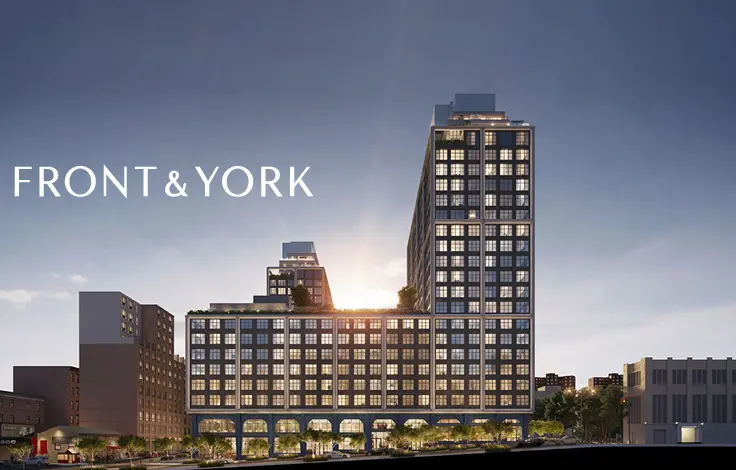
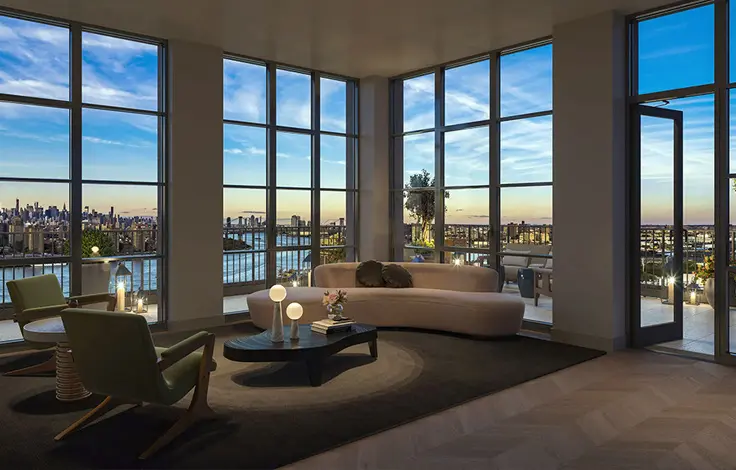

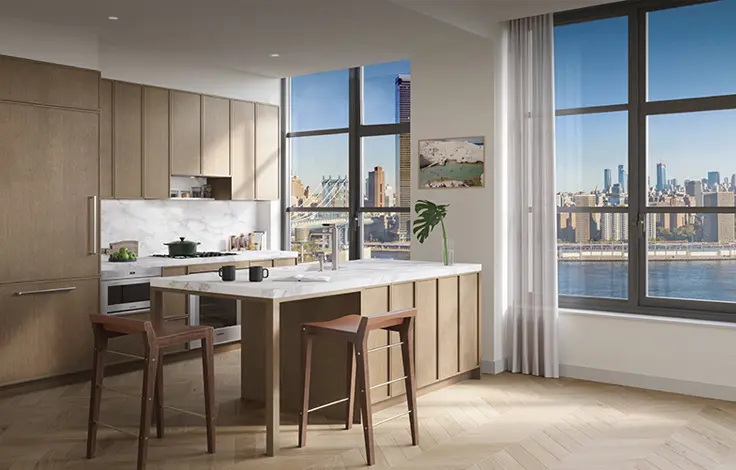
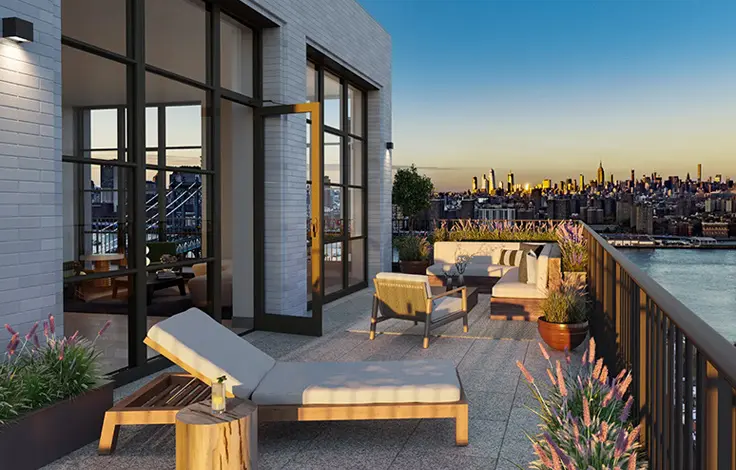
 6sqft delivers the latest on real estate, architecture, and design, straight from New York City.
6sqft delivers the latest on real estate, architecture, and design, straight from New York City.
